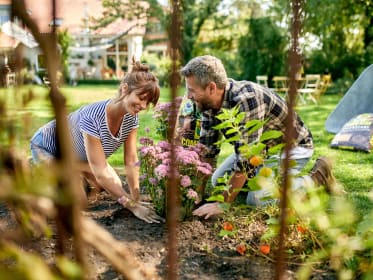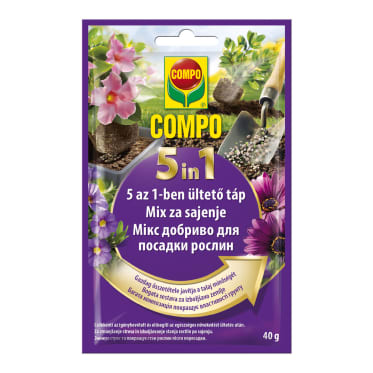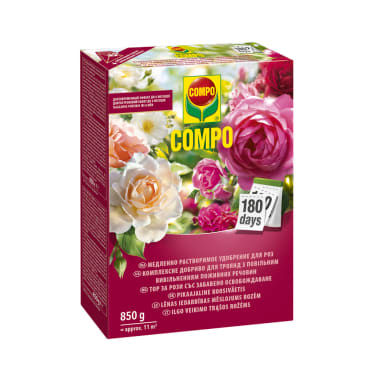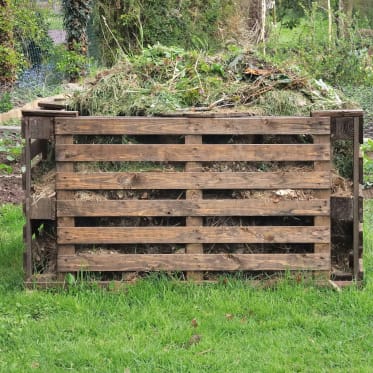Frequent search terms

- COMPO
- Guide
- Plant Care
- Garden
- Garden care
- Gardening for beginners
The first steps closer to your dream garden
Gardening for beginners
Have you finally found the perfect home? Perhaps even built it yourself, coping with all the hard work the (re)construction entails in the process? Or maybe you've recently signed the contract for an allotment? And now your fingers have started to tingle... Get started planning the garden! But creating or redesigning a garden can be quite challenging when you don't have much experience. COMPO shows you how to turn this seemingly mammoth task into an exciting journey that ends with a sense of achievement.

Step 1: Make a realistic estimate of the planning and maintenance costs
Good planning is half the battle – and this is especially true of garden planning. With that in mind, the first question should always be: What kind of garden do you want? Thinking about the cost and effort is closely related to this, of course. As beautiful as a large garden may be, you can quickly become overworked and frustrated when knowledge, time and budget are limited or even lacking altogether. Accordingly, novice garden owners should first think about how much energy and money they want to invest in the land outdoors. The garden tends to be at the bottom of the list of priorities for many new homeowners, in particular. After all, investments inside the home are more important. Smart planning and low-maintenance plants are crucial, especially when time and budget are limited.
Tip
The ideal garden size for an inexperienced hobby gardener is 300-400 m².

Step 2: Check the soil's quality
Beginners often buy plants on a whim. If newly acquired green friends then start to hang their heads after only a short period or are completely unwilling to grow, helplessness prevails. So, the most important basic rule for every gardener is that it's not the appearance but rather the soil that determines the choice of plants! You can only choose the right plants if you know the requirements of your soil. To test the soil conditions, pick up a handful of it and create a ball. If it runs through your fingers, then everything points to sandy soil. On the other hand, it's likely to be loamy soil if the ball remains intact.
If you want to know exactly what soil you have, you can take samples of it and have them analysed professionally. Sandy soils are especially challenging for the inexperienced because they are low in nutrients and water seeps away faster. On the other hand, loamy soils are a true paradise when it comes to nutrients but hardly allow any air to reach the roots because of their structure. But there's no need to worry because you can improve the soil's structure significantly by working compost into it with a spade or garden fork.

Step 3: Discovering plant needs
Selecting your floral favourites only makes sense if you know the soil conditions, shady parts of the garden and spots exposed to the sun, as well as the various water and nutrient requirements of the plants. With that in mind, the novice gardener should always seek good advice when making a purchase. For beginners who are not very familiar with the floral world, slowly growing crops are especially suitable.
Basically, resilient perennial plants like the catnip, lady's mantle, coneflower or stonecrop are always a good choice because once planted they flower anew every year. Not very demanding and inviting you to enjoy a healthy snack between meals, berry bushes like the currant or strawberry are also ideal for beginners. If you have a little more space in the garden, then plant ornamentals and fruit trees. They have to be cut regularly but are otherwise quite easy to maintain.

Step 4: Getting off to a good start
Once you've found a suitable spot for the new garden inhabitants, regular fertilisation can foster growth. The development of new leaves and flowers costs a plant a lot of energy, especially in the spring. It's therefore advisable to use a slow-release fertiliser adapted to the needs of garden plants immediately when you plant them. Now all that's left to do is to set up a rain barrel and – depending on the weather – water thoroughly several times a week. This will bring you closer to your dream garden in leaps and bounds. Having said that, something every beginner will learn over time is that a garden is never completely finished, there's always something to do. But how does the saying go? Practice makes perfect!
Even beginners will get green fingers with this
More on the topic of garden care















